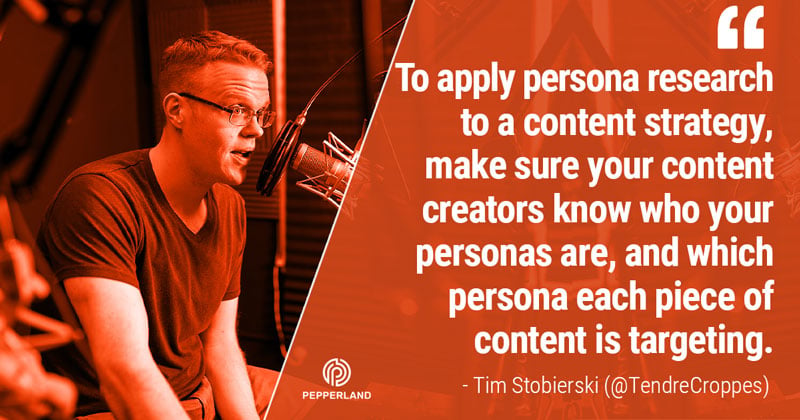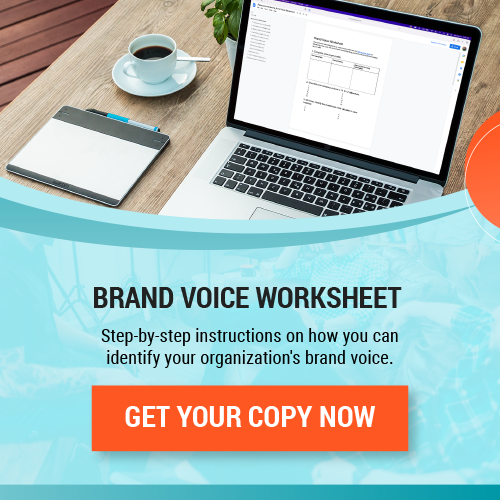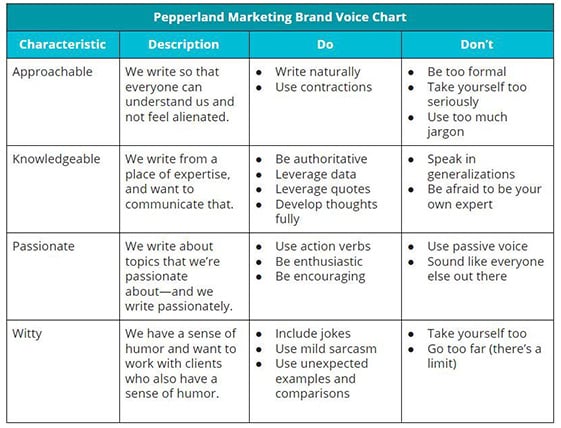Written By:
Tim Stobierski
Brand voice plays an incredibly important role in virtually every aspect of a school’s marketing and communication efforts.
How’s that, you ask?
Well, just think of the role that your own voice plays in your everyday life. Your voice:
- Helps you stand out from the crowd
- Lets you effectively communicate with those around you
- Helps your friends and family recognize you for you
- Speaks to who you are as a person, offering insight into your personality
A school’s brand voice serves precisely the same roles but on behalf of your institution. It helps your school stand out from other educational options, offers insight into your culture and values, and makes it easier for prospective families, students, and community members to recognize and connect with you.
Download our Free Brand Voice Worksheet
For step-by-step instructions on how you can identify your school's brand voice.
But how should schools actually go about identifying their brand voice and ensuring that it reflects the qualities you want associated with your institution?
Below, we walk you step by step through a process of establishing your brand voice and ensuring it permeates throughout all your communications.
1. Paint a picture of your ideal audience.
If your brand voice is going to be effective in attracting your ideal audience, you will, of course, need to have a clear sense of who they are.
Hopefully, you already have a clear picture of your audience in the form of a parent or student persona, but if you for some reason don’t yet have these profiles created, you should create them before diving into the specifics of your brand voice.
This profile should speak to your audience in three key areas:
- Demographics: What is the typical age, location, and background of the families or students you want to attract?
- Goals and Concerns: What are their aspirations or concerns regarding education? Are they seeking academic excellence, a nurturing community, strong extracurriculars, or career preparation
- How do they consume information?: Where does your audience typically turn for information? Do they engage with social media, email newsletters, printed brochures, or community events? What tone do they prefer? Informal, formal, inspiring, technical, etc.?

Not sure where to turn to get these insights? Survey data from your community, feedback from admissions staff, and even your website analytics can help paint this picture. Speaking to teachers and parent committees can also offer valuable insights into what resonates with your audience.
Why is your audience profile so important in identifying your school’s brand voice? Different people prefer to be spoken to in different ways. For example:
- A family exploring private elementary schools may gravitate toward warm, nurturing language that emphasizes community and support.
- A high school student researching colleges may be drawn to a voice that emphasizes academic excellence, innovation, or career readiness.
When defining your brand voice, it’s important to know who your ideal audience is so you can tailor your communication to their expectations.
2. Describe your school's culture.
In addition to helping you appeal to your audience, your brand voice also gives your school a distinct personality. The importance of this really can’t be understated: By offering families a glimpse of your authentic self, you help build trust and establish the foundation for meaningful engagement.
The best way to ensure your brand voice is authentic? Make sure it reflects the values and characteristics of your school community—especially those of your faculty, staff, and leadership. Your school’s culture should shine through in every communication.
Brainstorm 10 to 12 qualities that best describe your school, students, faculty, and overall environment. For example:
- Innovative
- Supportive
- Traditional
- Collaborative
- Diverse
3. Map your attributes back to your audience profile.
Now that you understand who your ideal audience is and who you are as a school, it’s time to tie your attributes back to your audience. Of the 10 to 12 adjectives you brainstormed, what are the top four that you think would MOST appeal to your audience?
If you’ve found obvious fits, that’s great. These qualities will serve as the foundation for your voice. If, however, you’re struggling to find alignment, there may be a misalignment between your school’s perception and your audience’s expectations. This could signal a need to adjust how your school communicates its identity.
4. Identify your aspirations.
Once you know the characteristics your school currently embodies and the traits most appealing to your audience, think about your aspirations. What qualities or characteristics do you most want your audience to associate with your school in the future?
These aspirational qualities—such as leadership, inclusion, or innovation—can guide your messaging and help shape your brand as your school grows.
Keep this list short—no more than three to five adjectives.
5. Understand your competitor’s voice.
One of the most important roles of brand voice is helping your school stand out. If your offerings are similar to those of other institutions, your voice can serve as the differentiator families need to remember you.
Start by identifying three or four peer schools or competitors. Then, review their communications—brochures, websites, social media posts—and identify the tone and qualities they emphasize. Are they formal and academic? Warm and inviting? Practical and direct?
What patterns do you notice? By going in a different direction, you can carve out a unique voice for your school. For example, if most competitors emphasize tradition and formality, adopting a tone that emphasizes innovation or community could help you stand out.
6. Settle your tone.
Your tone—how formal or casual your communication is—should be informed by both your audience profile and your school culture.
For example, a college preparing students for competitive careers might lean toward a tone that’s professional and aspirational, while a nurturing elementary school might adopt a more conversational and friendly tone.
To visualize your tone, imagine a spectrum from 1 to 10. On one end, picture the formality of a university’s academic catalog, and on the other end, think of a vibrant, playful preschool newsletter. Where does your school fall?
7. Find examples that match your desired brand voice and tone.
Once you’ve defined your tone, gather examples of communications that reflect it. These could include:
- Social media posts
- Admissions materials
- Parent newsletters
- Event promotions
Your examples should include both text and visuals, as brand voice extends beyond words to elements like images, colors, and fonts.
8. Incorporate your brand voice into all content.
Now that you have a clear sense of your school’s brand voice, it’s time to ensure consistency. All communications—from blog posts and admissions brochures to emails and social media—should reflect your voice.
The best way to ensure consistency is to create a brand voice guide. This document should outline your school’s tone, style, and key characteristics, along with dos and don’ts for your team to follow. Include examples to clarify your expectations.
You could also create a brand voice chart that outlines the different characteristics of your brand voice, along with some dos and don’ts for your writers to follow. The clearer you can get in helping your team understand and implement your brand voice, the better.
Don’t forget about overlooked areas like faculty bios, calls-to-action, and even signage. Your social media channels, in particular, should embody your voice, as they often serve as the first touchpoint for families.
The Power of Voice in Education
In today’s competitive education landscape, a clear and compelling brand voice can make all the difference. By aligning your voice with your school’s culture and the expectations of your audience, you can build trust, stand out from competitors, and create meaningful connections with families and students.
Start defining your school’s brand voice today to create a lasting impression and foster engagement across your community.










